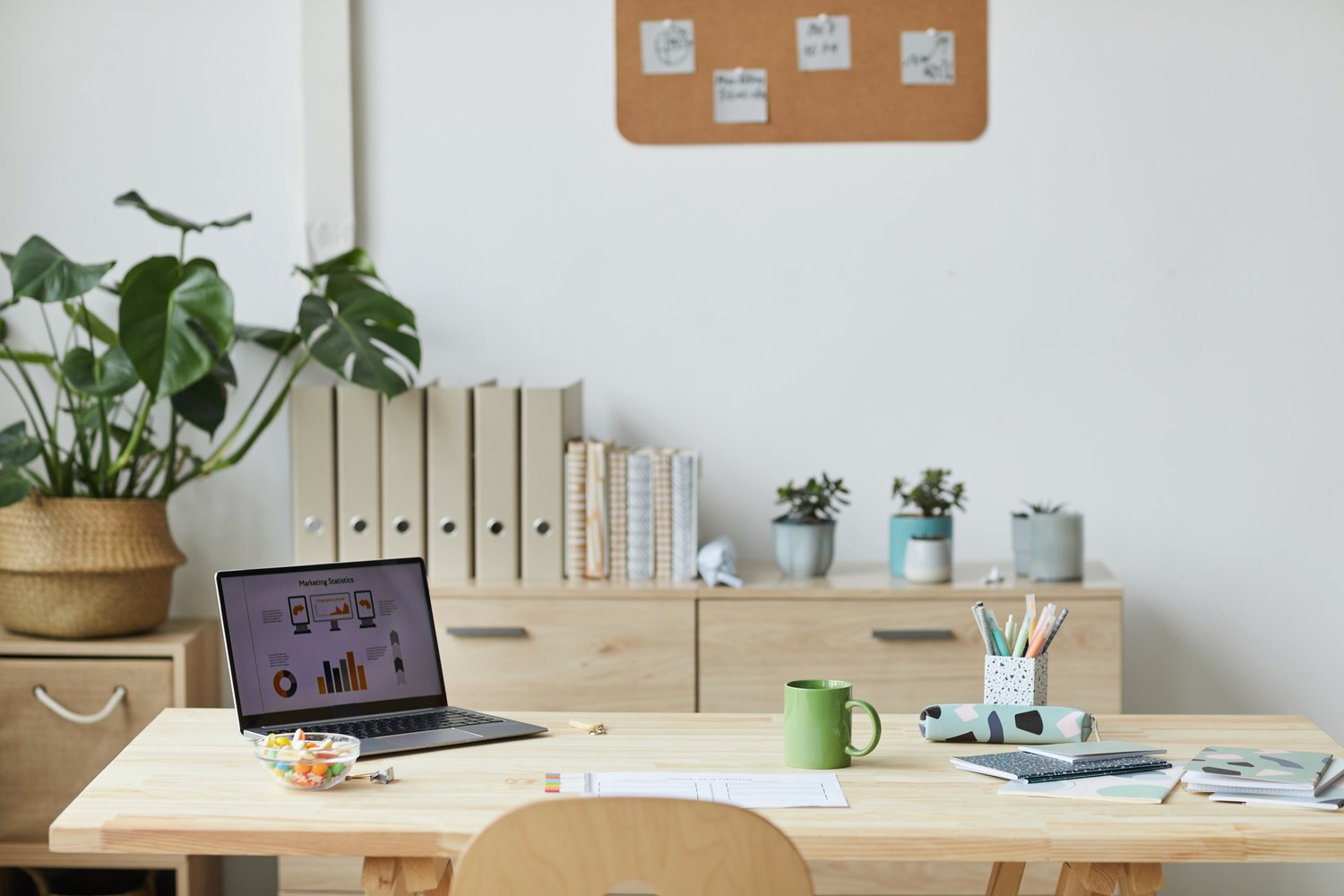The shift toward remote work has made creating a functional home office more important than ever. A thoughtfully designed workspace can significantly impact your productivity, physical wellbeing, and overall job satisfaction. Whether you’re converting a spare bedroom, transforming a corner of your living room, or repurposing an underutilized nook, this guide will help you create a work from home space that balances productivity with comfort. The following sections offer practical advice for designing an efficient, ergonomic, and inspiring home office that supports your professional needs while complementing your home’s aesthetics.
Choosing the Right Location
Finding the optimal location for your home office is the crucial first step in your productive workspace setup. Ideally, select an area with minimal traffic and distractions, away from household high-activity zones. Natural light is invaluable for maintaining energy levels and reducing eye strain, so prioritize spaces near windows when possible. If natural light is limited, invest in full-spectrum lighting that mimics daylight. Consider noise levels as well—if you live in a busy household, look for rooms with doors that close or areas that can be sectioned off with room dividers. The physical separation between your work and living spaces helps create mental boundaries that are essential for work-life balance. Remember that even a small, dedicated space is preferable to working from your bed or kitchen table, as it helps your brain associate that specific area with focused work rather than relaxation or family activities.
Ergonomic Essentials for Physical Wellbeing
An ergonomic home office setup is non-negotiable for preventing physical discomfort and potential long-term health issues. Start with a proper chair that provides lumbar support, adjustable height, and comfortable cushioning. Your feet should rest flat on the floor with thighs parallel to the ground. Your desk height should allow your elbows to rest at approximately 90 degrees when typing. Consider a standing desk converter if you prefer alternating between sitting and standing throughout the day. Monitor positioning is equally important—the top of your screen should be at or slightly below eye level, about an arm’s length away. If you use a laptop, invest in a separate keyboard and mouse along with a laptop stand to achieve proper ergonomics. Wrist rests for your keyboard and mouse can help prevent strain during long typing sessions. Remember that even the most ergonomic setup requires movement breaks—set reminders to stand, stretch, and rest your eyes every 30-45 minutes for optimal physical health.
Organization and Storage Solutions
A cluttered workspace leads to a cluttered mind. Effective home office design incorporates smart storage solutions that keep essentials accessible while minimizing visual chaos. Start by analyzing your specific storage needs based on your work requirements. Vertical storage options like bookshelves or wall-mounted cabinets maximize floor space in smaller areas. Desktop organizers can keep frequently used items within arm’s reach without creating clutter. Cable management systems prevent the distraction and frustration of tangled wires while creating a cleaner aesthetic. Many professionals find that closed storage helps reduce visual distractions, allowing items to be nearby but out of sight when not in use. AskHomey offers excellent resources for finding custom storage solutions that match both your functional needs and design preferences. Remember that organization isn’t just about aesthetics—a well-organized workspace saves time, reduces stress, and supports focused work by eliminating the need to search for misplaced items.
Creating an Inspiring Atmosphere
The visual and sensory aspects of your home office contribute significantly to your motivation and creativity. Consider painting your workspace in colors that promote focus and productivity—blues and greens for calm concentration, or warmer tones if you need energy and stimulation. Personalize your space with meaningful items that inspire you without creating clutter, such as framed photographs, artwork, or small plants. Indoor plants not only add visual interest but also improve air quality and have been shown to reduce stress levels. Proper temperature control ensures physical comfort, as being too hot or cold can be distracting. If you enjoy background noise while working, consider a small speaker for music or a white noise machine to mask household sounds. Scented candles or essential oil diffusers with focus-enhancing scents like rosemary, mint, or citrus can create an invigorating atmosphere. These atmospheric elements work together to create a workspace that feels both professional and personally meaningful.
Technology and Connectivity Considerations
A productive home office relies on reliable technology and connectivity. Position your workspace near electrical outlets and ensure you have sufficient power for all your devices. If possible, connect to your internet router via ethernet cable rather than WiFi for more stable connectivity. Consider investing in a UPS (uninterruptible power supply) to protect sensitive equipment and prevent work loss during power fluctuations. Backup solutions for important files, either cloud-based or external drives, provide peace of mind. For virtual meetings, adequate lighting is essential—position a light source in front of you rather than behind to avoid appearing as a silhouette. A dedicated work phone or headset can improve call clarity while reducing strain from holding a handset. Take time to properly set up your computer with necessary software, bookmarks, and shortcuts to streamline your digital workflow and minimize frustration during busy workdays.
For more tips and to connect with reliable home service professionals, follow AskHomey on Facebook and Instagram.



